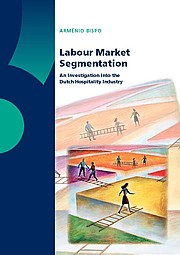Labour Market Segmentation: An Investigation into the Dutch Hospitality Industry Defended on Friday, 15 June 2007
Almost 42,000 establishments, over 310,000 employees and approximately 13 billion Euro annual turnover (including VAT). This, in a nutshell, captures the Dutch hospitality industry in 2005. The aim of this study is to examine the functioning of the labour market in the Dutch hospitality industry. The work force is a significant element in this industry for generating turnover. It is therefore vital to focus attention on the various aspects of labour to work towards a sustainable business operation. There needs to be a constant effort here to achieve a balance between quantity and quality. This balance is effected, for example, by an appropriate earnings structure, flexibility of the work force and functional employee turnover. To expand on these, and other aspects of the labour market it is the testing of the empirical plausibility of a segmented labour market in the Dutch hospitality industry that forms the common theme throughout this book. The empirical investigations reveal that the theory of labour market segmentation is a fruitful approach to the study of structure and behaviour in the Dutch hospitality industry. In the fields of individual earnings, labour flexibility and labour mobility – core elements within the segmentation theory – we can to a large extent identify significantly different worker groups. This offers starting points for implementing a segment-specific policy; labour market policy by the government and Human Resources Management within organizations.
Keywords
Labour market, Hospitality industry, Job wealthy workers, Individual earnings, Human capital, Working conditions, Labour flexibility, Job satisfaction, Labour mobility, Econometrics, Segmentation






